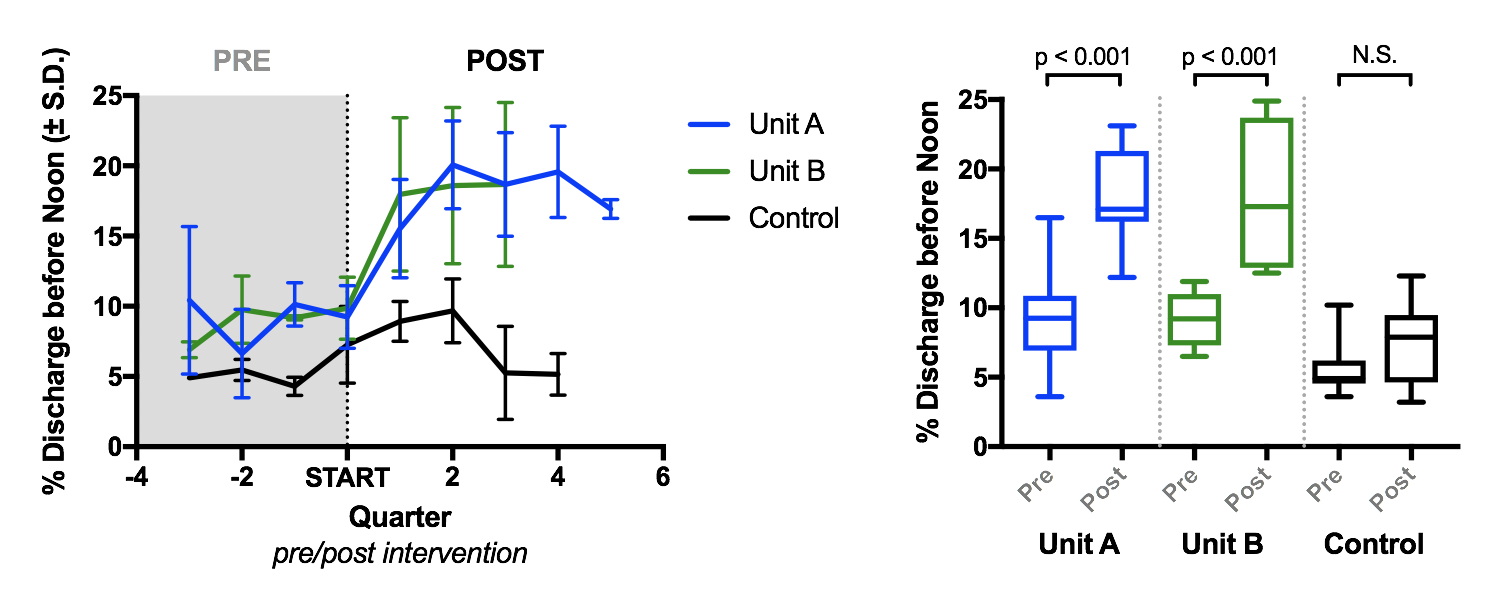Background: Hospital discharges before noon have become a common institutional goal in order to improve hospital throughput, reduce emergency department boarding time, and enhance patient satisfaction. Evaluation of baseline rates at Brigham and Women’s Faulkner Hospital (BWFH), a 100-bed academically-affiliated community hospital, demonstrated <10% of patients were discharged before noon.
Purpose: To improve rates of discharge before noon to 20% among patients on two general medical (GMS) units at BWFH utilizing a cost-neutral intervention.
Description: We launched a friendly competition and positive incentive program among multidisciplinary providers (RN, NP, MD) on two GMS units. All providers on intervention units were encouraged to aim for a 20% rate of discharges before noon, and informed that for each completed discharge before noon they would be awarded a “sticker” and hierarchical listing on a “sticker chart”. A colorful sticker chart was placed in the team report room, used daily by targeted providers during interdisciplinary rounds thus highly visible to all included providers. On a monthly basis, the top three individuals in each provider group were given a coffee gift card and publicly praised via service wide email for their efforts. To sustain momentum, we posted monthly updates on which unit had met the 20% goal and provided a rotating trophy and bowl of candy to the winning unit. The intervention was launched on unit A in August of 2017, and unit B in February of 2018. A third GMS unit (unit C) with identical patient population was not included in this program and served as a control. Administrative data for discharge rates before noon was reviewed for a 10 month period before and after the individual start dates of the intervention for units A and B, and for 10 months before and after Jan 2018 for the control group. As a counterbalance measure, we also examined 30-day readmission rates and length of stay (LOS) on all units for the same time units. Results are shown in Table 1 and Graph 1. Data review also demonstrated that unit A maintained a discharge before noon rate between 17-23% for over a year after the project initiation, markedly above its prior baseline.
Conclusions: We demonstrated that a low-cost, minimally resource intensive intervention that leveraged friendly competition with positive incentives resulted in doubling of discharge before noon rates without increasing 30-day readmission or LOS, suggesting that these measures are highly motivational to many providers. We also demonstrated that our simple intervention had a sustained effect over a 12 month period. Due to the simplicity and affordability of the intervention, we expect this to be easily implemented across other institutions. Future goals include methods to maintain engagement and disseminate similar work flow to other inpatient units.


